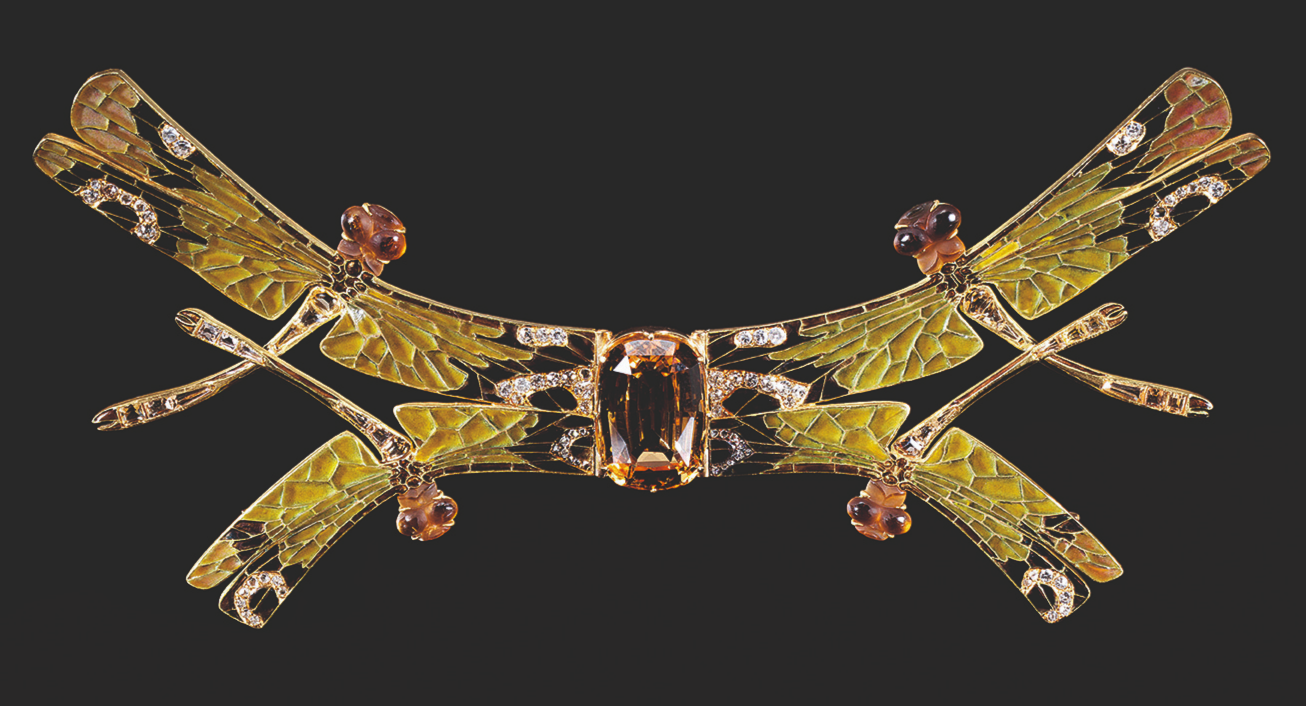Created by René Lalique around 1900, this is an extraordinarily modern jewel to the twentieth century eye, that, in its day, would have challenged the basic tenets of mainstream society jewellery not only through its form but also in its subject matter and choice of materials.
The muted autumnal palette of golden brown, sage green and tan is in line with the chromatic preferences of Art Nouveau. The choice of the delicious honey-coloured topaz for the central stone is in perfect harmony with the colour of the plique-à-jour enamel of the wings and the pâte-de-verre heads of the insects.
Diamonds are kept to a minimum and their function is simply to draw attention to elements of the design.



